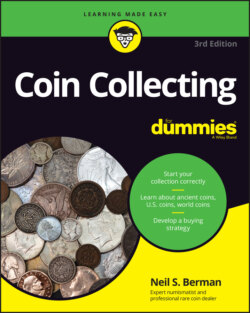Читать книгу Coin Collecting For Dummies - Neil S. Berman - Страница 53
Staying focused
ОглавлениеAfter you decide on a collecting plan, stick with it. Focus on your goals, and remain immune to the siren call of other coins. I know that temptation is hard to resist, but to conserve your resources and be ready when buying opportunities arise, you must remain strong.
Though I recommend sticking with your game plan, I don’t want to say that you can never change your mind. But there’s an important reason not to get distracted — a little thing called transaction costs.
Transaction costs are the fees you pay to get in and out of the coin market. If you’re familiar with the stock market, you know a different name for transaction costs: commissions. When you buy a stock, you’re charged a commission based on the price of the stock; when you sell a stock, you’re charged a commission again. Because the commissions come out of your pocket, you must figure them into your cost of the stock and the amount of any profits or losses that you make when you sell the stock. In many cases, commissions can eat up all your profits or enlarge your losses.
Transaction costs are part of numismatics, but not in such an obvious way. In numismatics, transaction costs are baked into the buy/sell spreads (the difference between what a dealer pays for a coin and how much they sell the coin for). Buy/sell spreads are much wider than they are in stocks. The buy/sell spread on a $100 stock may be 50¢, for example, but on a $100 coin, the spread may be as wide as $30. Suppose that you buy a coin for $100. Ask the dealer what they’d pay to buy the coin back in a week. If the buyback price is $90, you’re facing a potential loss of $10. Therefore, the market has to go up $10 just for you to break even on the coin.
Every time you buy a coin that isn’t part of your collecting plan, you face unnecessary transaction costs — one more reason not to buy any unplanned coins.
